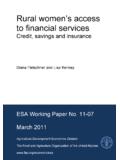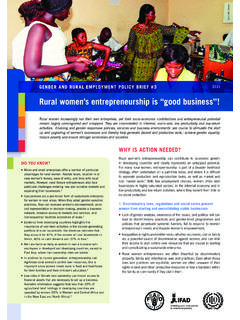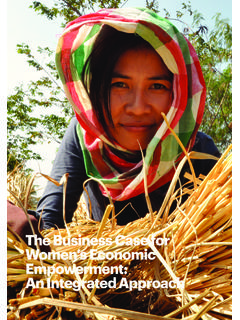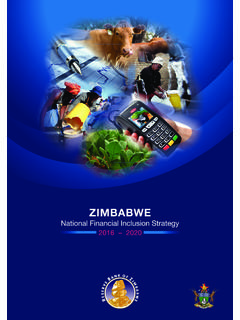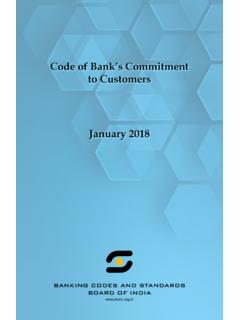Transcription of Status of Women: North Eastern Region of India versus India
1 International Journal of Scientific and Research Publications, Volume 3, Issue 1, January 2013 1 ISSN 2250-3153 Status of women : North Eastern Region of India versus India Dr. Ira Das Assistant Professor, Department of Economics, Pragjyotish College, Guwahati-09, Assam, India Abstract- Geographically, men and women share the same space, but everywhere in the world, women are accorded a lower Status than men. The North Eastern Region of India has been considered as a backward Region in terms of growth in per capita income. However, there is a perception that the Status of women is higher in the North Eastern Region of the country in comparison with the Status of women in all India average. In this study, an attempt has been made to examine the Status of women in the North Eastern Region in comparison with all India average.
2 It is found from the analysis that the Status of women in the Region is comparatively better than the rest of the country only in some selected indicators. The indicators reveal that women have a very low degree of freedom of movement and low level of control over themselves in North Eastern Region . Index Terms- India , North Eastern Region , Status , women I. INTRODUCTION tatus of women refers to the position of women in society in relation to men. Although, geographically, men and women share the same space, yet they are not treated equally in the world. In reality, there exists inequality in women s access to education, health care, physical and financial resources and opportunities in the political, economic, social and cultural field. Everywhere in the world, women are accorded a lower Status than men. According to Mohiuddin (1995), women 's lower Status is manifested in women 's low wage rates than men in all occupational fields and industries, in their limited upward mobility, and in their greater family responsibilities due to divorce, abandonment, etc.
3 In the developed countries. In the developing countries, women 's lower Status is reflected not only in their work being underpaid, unrecognised, but also in their limited access to productive resources and support services such as health and education. The Status of women can be judged by some indicators. To measure the Status of women a composite index is constructed by the Population Crisis Committee (PCC) and used by the World Bank and the United Nations which focuses on indicators measuring health, education, employment, marriage and childbearing and social equality. Mohiuddin (1995) argues that these indicators have a poverty-bias and measure women 's Status in terms of structural change rather than in terms of their welfare vis-a-vis men. Therefore, he formulated an Alternative Composite Index (ACI) of the Status of women , based on many more indicators reflecting women 's issues in both developed and developing countries.
4 The ACI is based on several indicators in eight sectors: health, schooling, adult education, labour force participation, conditions of employment, domestic life, political representation and legal rights. Rustogi (2004) tried to measure women s Status with the help of a diverse set of indicators. She selected some broad indicators across Indian states namely education, health, survival, participation in private/public decision making and safety/security to measure the Status of women in the society. The Region located on the North east part of India are regarded as the North Eastern Region (NER) and it consists of Arunachal Pradesh, Assam, Manipur, Meghalaya, Mizoram, Nagaland, Tripura, and Sikkim. The NER of India has been considered as a backward Region in terms of growth in per capita income.
5 In 2007-08, the per capita income of the state at constant (2004-05) prices was , 279 against the per capita income for the country of Rs. 33, 731 (Government of Assam, 2010-11). Generally, it is thought that the Status of women is comparatively better in tribal society (Handsdak, 2012; Burman, 2012). The tribal people are more in numbers in the NER. The scheduled tribe are per cent in Mizoram, per cent in Nagaland, per cent in Meghalaya, per cent in Arunachal Pradesh, per cent in Manipur, per cent in Tripura, and per cent in Assam (Zahol, 2010). Moreover, there is matrilineal system (The matrilineal societies are those societies where property is transmitted from mother to daughter) in Meghalaya. Therefore, there is a perception that the Status of women is better in the states of the North Eastern Region of the country in comparison with the Status of women in rest of India .
6 In this study, an attempt has been made to examine the Status of women in North Eastern Region in comparison with the all India average. This paper is organised in four parts. The introductory part introduces the study problem and presents the objectives of the study. The second part describes the data source and methodology of the study. While results and discussion are presented in the third part, conclusion is presented in the final part. II. DATA SOURCE AND METHODOLOGY The study is based on secondary data. The data are mainly collected from the Census reports of the government, National Sample Survey Organisation (NSSO), Registrar General of India etc. The Status of women in North Eastern Region in comparison with the rest of India is examined on the basis of different indicators, namely Female Literacy (FL), Female Workforce Participation Rate (FWPR), Gross Enrolment Ratio, Dropout Rates, Sex Ratio, Female Infant Mortality, Age at Marriage, and women s Participation in Decision- S International Journal of Scientific and Research Publications, Volume 3, Issue 1, January 2013 2 ISSN 2250-3153 making/ women Empowerment.
7 Mostly, Status is examined with the help of the method of ranking of states in different indicators. Rankings are assigned from the best to worst performing states. However, in case of the negative indicators like dropout rates, infant mortality etc. (where high values are unfavourable for the society), rankings are given from worst to best performing states. III. RESULTS AND DISCUSSION The Status of women in NER is examined on the basis of the following indicators. Female Literacy and Gender Gap The female literacy and the gender gap of NER along with the other states of the country are presented in Table 1. Ranking of the states in the table depicts the picture that the states with high women literacy rates are the states of NER (except Arunachal Pradesh), and Kerala. These are also the states where the gap in literacy rates between men and women is low.
8 Both non-economic and economic factors are discussed in the literature to explain the prevalence of the gender gap in literacy rates. Table Literacy and Gender Gap in Literacy Rates (GLR) State Rank in Female Literacy Rank in GLR State Rank in Female Literacy Rank in GLR Kerala 1 2 Assam 13 9 Mizoram 2 3 India 14 15 Lakshadweep 3 5 Orissa 15 17 Tripura 4 7 Chhattisgarh 16 22 A & N Islands 5 6 Madhya Pradesh 17 20 Goa 6 8 Andhra Pradesh 18 13 Nagaland 7 4 Arunachal Pradesh 19 11 Maharashtra 8 12 Uttar Pradesh 20 18 Meghalaya 9 1 Jammu & Kashmir 21 19 Manipur 10 10 Jharkhand 22 23 Uttarakhand 11 16 Bihar 23 24 Gujarat 12 14 Source: Census of India (Provisional Data), 2011 Female Work Participation Rate The female workforce participation rate of the states of NER in comparison with the rest of India is presented in Table 2.
9 The table reveals the fact that female work participation rates (FWPR) are higher in most of the NER states with hilly regions and those inhabited by tribals than other states of rest of India , even in Kerala. Except Assam, Manipur and Tripura, the FWPR are higher than all India average for many NER states. These are also the states where there are low gender disparities in terms of work participation. Higher FWPR can be partially explained by the fact that community-based organisation of subsistence production requires a high level of women s labour participation. Some scholars have linked higher participation of women with rice cultivation. Another factor associated with better work participation levels is educational attainment. Table Work Participation Rate (FWPR) States/Uts Rank FWPR States/Uts Rank FWPR Chattisgarh 1 Madhya Pradesh 13 Himachal Pradesh 2 Jharkhand 14 Nagaland 3 Jammu and Kashmir 15 Andhra Pradesh 4 Gujarat 16 Meghalaya 5 Orissa 17 Rajasthan 6 Uttarkhand 18 Mizoram 7 India Arunachal Pradesh 8 Manipur 19 Karnataka 9 43 Kerala 20 Maharashtra 10 Punjab 21 Sikkim 11 Assam 22 International Journal of Scientific and Research Publications, Volume 3, Issue 1, January 2013 3 ISSN 2250-3153 Tamil Nadu 12 Tripura 23 Source: Based on calculations from NSSO (2010).
10 Gross Enrolment Ratio The gross enrolment ratio of the states of NER with the other states of India is presented in Table 3. When the enrolment rates of Class I-VIII of Schools for General Education in different states of India are compared, it is seen that the enrolment rates are comparatively higher in NER than some states of the rest of India like Bihar, Goa, and Chandigarh. Table Enrolment Ratio in Class I-VIII of Schools for General Education Classes I-VIII (6-13 years) Classes I-VIII (6-13 years) States/UTs Girls Boys Total States/UTs Girls Boys Total Andhra Pradesh Orissa Arunachal Pradesh Punjab Assam Rajasthan Bihar Sikkim Goa Tamil Nadu Gujarat Tripura Haryana Uttar Pradesh Himachal Pradesh West Bengal Jammu & Kashmir A&N Islands Karnataka Chandigarh Kerala D&N Haveli Madhya Pradesh Daman & Diu Maharashtra Delhi Manipur Lakshadweep Meghalaya Puducherry Mizoram India Nagaland Source: Government of India (2012), Data for use of Deputy Chairman, Planning Commission, 10 April.










